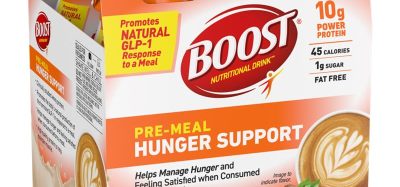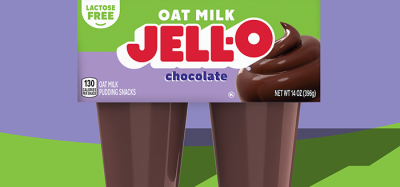Controlling contaminants: the new facet of ‘clean label’
- Like
- Digg
- Del
- Tumblr
- VKontakte
- Buffer
- Love This
- Odnoklassniki
- Meneame
- Blogger
- Amazon
- Yahoo Mail
- Gmail
- AOL
- Newsvine
- HackerNews
- Evernote
- MySpace
- Mail.ru
- Viadeo
- Line
- Comments
- Yummly
- SMS
- Viber
- Telegram
- Subscribe
- Skype
- Facebook Messenger
- Kakao
- LiveJournal
- Yammer
- Edgar
- Fintel
- Mix
- Instapaper
- Copy Link
Posted: 19 August 2019 | Jaclyn Bowen | 1 comment
A worrying number of products have been found to contain contaminants. As the popularity of ‘clean label’ rises among consumers, Clean Label Project is on a mission to bring transparency to consumer product labelling. Jaclyn Bowen, Executive Director of the project, explains how.


The term ‘clean label’ does not have a regulatory definition, nor does it have a single consumer interpretation. Yet, according to the US food industry commentator, Progressive Grocer, six out of 10 consumers feel that ‘clean’ claims align with greater ‘healthfulness’.1
The global clean label ingredients market is expected to be valued at $51. 14 billion by 2024 in order to meet the growing consumer demand for clean label food and consumer packaged goods.2 But what does ‘healthfulness’ mean? What objective should brands set as the target for ‘clean label’? The answer is two core concepts, the first of which is the use of simple ingredients; and the second, which is frequently overlooked, is an increased focus on ingredient purity, namely industrial and environmental contaminants.
According to the Institute for Food Technologists,3 clean label means making a product using as few ingredients as possible and making sure those ingredients are items that consumers recognise and regard as wholesome. It includes foods with easy-to-recognise ingredients and no artificial flavours or synthetic chemicals.
A growing area of consumer interest and expectation when it comes to clean label, is an increased focus on product contents that are not found on the label. Products blanketed with such claims as ‘natural’, ‘sustainable’ and touting benefits of ‘wellness’, create difficulty for consumers who are trying to decipher their differences and the genuineness of their claims.
Marketing departments do an effective job of selling comfort and security. When was the last time that you saw a product at the grocery store with a claim that said, “This product is entirely average. In fact, it doesn’t taste very good and it has a BPA-leaching problem from the product packaging”?
The global clean label ingredients market is expected to be valued at $51. 14 billion by 2024 in order to meet the growing consumer demand for clean label food and consumer packaged goods
According to the April 2019 Shelby Report4 on consumer trust, nearly half of consumers who regularly buy food for their households do not trust the food industry to do the right thing, and nearly one quarter actively distrust it. Consumer product exposés fuel this distrust. In October 2017, Clean Label Project,5 a US national non-profit with the mission to bring truth and transparency to consumer product labelling, released a study on industrial and environmental contaminants (including heavy metals, pesticide residues and plasticisers) in America’s best-selling infant formulas and baby foods.
In August 2018, Consumer Reports6 validated that study by conducting a similar investigation, highlighting troublesome levels of heavy metals lurking in foods commonly eaten by babies and toddlers. In February 2019, the United States Public Interest Research Group7 released test results showing glyphosate (the active ingredient in the best-selling pesticide, Round-Up, that has been linked to non-Hodgkin’s lymphoma) in 19 out of 20 top selling beers and wines.
In June 2019, Consumer Reports8 published a study on the levels of arsenic in America’s best-selling bottled waters. In each case, the studies were featured in mainstream media outlets, analytical chemistry testing was conducted on the finished products, and heavy metals were highlighted as the area of concern.
There is widening polarity between the definition of food safety in the minds of consumers and federal food safety regulations. Consumers are increasingly concerned about exposure to chemicals such as glyphosate, lead and plasticisers, with links to long-term chronic disease like cancers and reproductive harm. Every year for the past decade, the International Food Information Council (IFIC)9 has surveyed more than 1,000 Americans aged 18-80, to gain insight into their attitudes towards food and diet. Although the manner of polling conduction on these topics has changed over the years, the research shows a steady rise in the number of consumers concerned about chemicals in their food. This includes heavy metals, pesticides and plasticisers, in addition to monosodium glutamate, artificial colours, flavours and preservatives.
While consumers are focused on industrial and environmental contaminants, the food safety regulatory and compliance fabric in America is largely focused on prevention of microbiological contaminants and the use of process-based audits.
The food industry is on the verge of a fundamental paradigm shift when it comes to food safety
At this time, the Office of Analytics and Outreach at FDA’s Center for Food Safety and Applied Nutrition10 is collecting data on contaminants and nutrients in foods as part of the Total Diet Study. In the short term, the heavy metal contaminant focus is on finalising the draft guidance that sets an action level for the presence of inorganic arsenic in infant rice cereals and apple juice. This scope falls short of delivering on the consumer concern of arsenic, cadmium, lead and mercury in all foods, in addition to pesticide residues, plasticisers and microbiological contaminants. While some brands may conduct finished product microbiological testing, very few are testing for pesticide residues, heavy metals and plasticisers. In the absence of federal regulation requiring brands to test and monitor levels for these contaminants, why would brands undertake this additional compliance and testing burden?
There are two reasons for this. Firstly, federal regulation could soon be changing. In April 2019, the United States Environmental Protection Agency (EPA) released the Federal Action Plan to Reduce Childhood Lead Exposures and Associated Health Impacts.11 The Action Plan is the product of the President’s Task Force on Environmental Health Risks and Safety Risks to Children.
The Task Force is the focal point for federal collaboration to promote and protect children’s environmental health. Objective 1. 6 is to reduce the exposure to lead from food. Objective 1. 8 is to reduce the exposure to lead from consumer products. This federal effort serves to complement the work and leadership demonstrated by Congresswoman DeLauro (CT-03)12 and her efforts to reduce and regulate childhood dietary arsenic exposure.
The second reason for brands to initiate industrial and environmental contaminant testing is competitive edge. Brands like Madhava in the sweetener category, Once Upon A Farm, Baby’s Only, and Yummy Spoonfuls in the baby food category, and ‘I and Love and You’ and ‘Buckley Pet’ in the pet food category are having their products randomly purchased and tested for industrial and environmental contaminants as part of the Clean Label Project certification programme. Instead of relying solely on Certificates of Analysis from suppliers, these brands rely on Clean Label Project’s Consumer Chain of Custody Sampling and Testing programme.
Clean Label Project simulates the consumer shopping experience by randomly going into the marketplace unannounced, purchasing products, and having them tested for a battery of heavy metals, pesticide residues and plasticisers. Through a proactive ingredient sourcing programme, coupled with tight product specifications, these brands have elected to enlist the validation of a third-party to verify their ongoing commitment to ingredient purity.
The food industry is on the verge of a fundamental paradigm shift when it comes to food safety. The FDA is no longer the only rule setter for safety. The new arbiters of safety and quality are consumers. Compliance with federal laws should be viewed as table stakes. The new face of food safety and clean label is compliance with the court of public opinion. Progressive brands that recognise this will align their corporate values and their food and consumer product safety and quality assurance systems to the values and product attributes that consumers care about, with an eye toward a long-term focus on health and finished product testing. With clean label, it’s what’s in the inside, not the outside, that counts.
References
1. https://progressivegrocer.com/clean-label-claims-driving-dollar-growth?from=gate
2. https://www.researchandmarkets.com/research/g3dd59/global_47_5_bn?w=5
3. http://blog.ift.org/what-is-clean-label
4. https://www.theshelbyreport.com/2019/04/10/foodthink-study-trust-food-industry/
5. https://www.cleanlabelproject.org/infant-formula-baby-food/
6. https://www.consumerreports.org/food-safety/heavy-metals-in-baby-food/
7. https://uspirg.org/news/usp/popular-weed-killer-found-top-beer-and-wine-brands
8. https://www.consumerreports.org/water-quality/arsenic-in-some-bottled-water-brands-at-unsafe-levels/
9. http://business.edf.org/blog/2016/06/06/consumer-concern-about-chemicals-in-food-continues-to-grow
10. https://www.fda.gov/food/conversations-experts-food-topics/what-fda-doing-protect-consumers-toxic-metals-foods
11. https://www.epa.gov/lead/federal-action-plan-reduce-childhood-lead-exposure
12. https://delauro.house.gov/media-center/press-releases/delauro-urges-fda-action-address-arsenic-infants-food
About the author
Jaclyn Bowen MPH, MS is the Executive Director of Clean Label Project and a food safety and quality systems engineer. Prior to coming to Clean Label Project, she spent 15 years at the World Health Organization Collaborating Centre, NSF International, working on the creation and enforcement of food safety and water quality standards and compliance systems.
Issue
Related topics
Clean Label, Food Safety, Free From, Health & Nutrition, Ingredients, Natural, Outbreaks & product recalls, Plant based, recalls, retail, The consumer










I just wanted to say thank you for this post! It was really well-written and super informative. I can’t wait to read more from you!